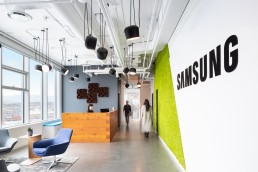Socializing
Crucial Living Wall System Design Considerations

The greening system has so many benefits and is one of the most attractive forms of vertical gardening, but it’s certainly a demanding commitment.
Ah, the Pinterest phenomenon that is the living wall. Large-scale works of art and gardens all in one, these monumental walls of greenery dramatically transform indoor and outdoor spaces alike.
Living walls are definitely some of the most worthwhile biophilic endeavours, but there are key considerations to keep in mind before proceeding with their installation.
There’s a time and a place
Much like gardens, living walls are a commitment that requires close care — but unlike gardens, their whole ecosystem is based on a highly artificial environment with delicate settings such as grow lighting and irrigation. The setup and maintenance of that environment is a significant commitment to take on in terms of both time and cost.
“The only thing worse than a blank wall is a dead living wall,” says MCM Interiors Associate Designer Nick Desert. It’s a valid point: the upkeep of living walls is absolutely no easy feat and when poorly managed, can actually be damaging to the space at hand.
Before integrating living walls into our designs at MCM Interiors, we gather a comprehensive understanding of our clients’ landscaping capabilities, resources, and budgets. We also carefully study their everyday processes in our early design process stages, working to ensure that they’re ready for the work and cost that these living walls may require — and that their teams are able to incorporate living wall landscaping into their regularly scheduled maintenance work.
To limit any surprises, we suggest engaging operations teams early on in the process.
The multifold benefits of living wall systems
It is our belief that the benefits of living walls make the work and costs involved worthwhile. Here are some of the reasons why:
- Wellbeing: It’s no secret that humans have an innate affinity for nature, and studies have shown time and time again that plants have a significant effect on wellbeing. For those who live in urban cities, the importance of biophilic features in interior design is of paramount importance.
- Passive thermal management: Thermally speaking, living walls can be excellent passive cooling or heating systems. They can reduce energy consumption bills while also cutting down a structure’s environmental footprint. A study published in Building and Environment in 2022 showed that the calculated thermal transmission value of space with a living wall was 31.4% lower than one without.
- Air purification: Living walls can absorb airborne toxins including formaldehyde, benzene, chloroform, and ammonia. NASA’s Clean Air Study from 1989 continues to be a useful reference in identifying plant species that have superior air filtration properties.
- Creativity: There are a lot of opportunities to get creative, and much like art — living walls are an excellent way to activate walls. In lobby design, green walls can even be a canvas for branding. The placement of living walls behind the reception desk is especially striking — certainly an uplifting way to welcome visitors.
- Acoustics: According to a study published in Applied Acoustics, living walls allowed for a weighted sound reduction index of 15 dB and a sound absorption coefficient of 0.40. This surprising acoustic consideration can be incredibly advantageous whether across the workplace, hospitality, healthcare, retail, or even residential.
- Biodiversity: Much like green roofs, living walls can support local urban biodiversity initiatives when installed outdoors.
Exciting biophilic alternatives
For those unable to maintain living wall systems, a host of other vertical greening systems is out there ready to be explored. The stabilized moss or lichen wall — which features lichen that is preserved and “locked” into its vibrancy — is a remarkably low-maintenance alternative. It also allows ample room for creativity; because preserved moss does not grow, virtually any desired design is set in place.
At Samsung’s offices in Vancouver, we brought energy to the lobby and welcoming area by angling a lichen wall in a cheeky interplay with the entrance logo.

Another alternative is the use of artificial living walls, but this is a route we don’t typically suggest taking because many of the benefits discussed above, like passive thermal control and air purification, are lost.
At MCM Interiors, we’ve integrated living walls into projects that include shopping malls, office complexes, and much more. Explore some of them here.
Enjoyed reading this article? Follow us on LinkedIn for more insights.